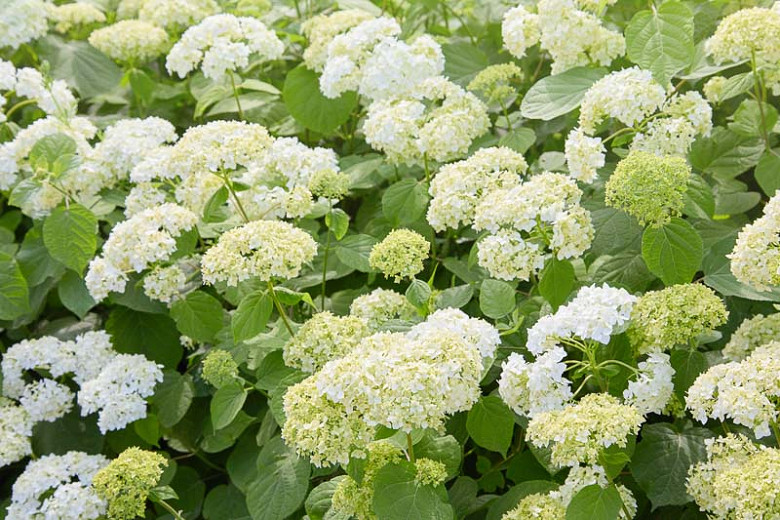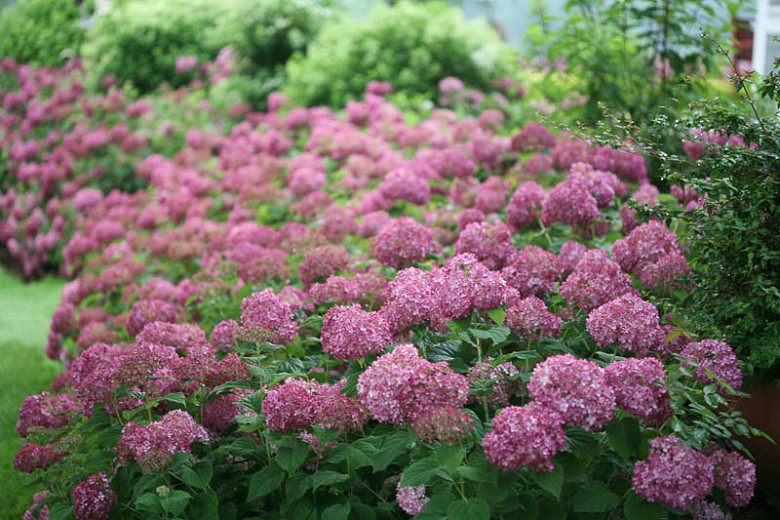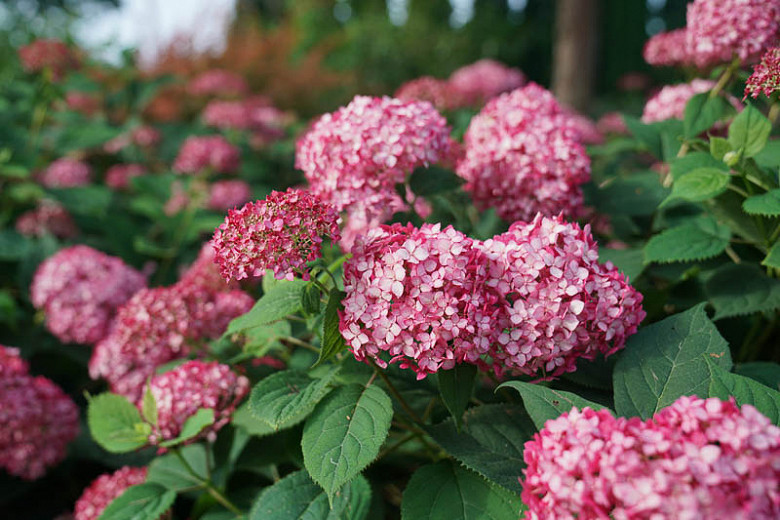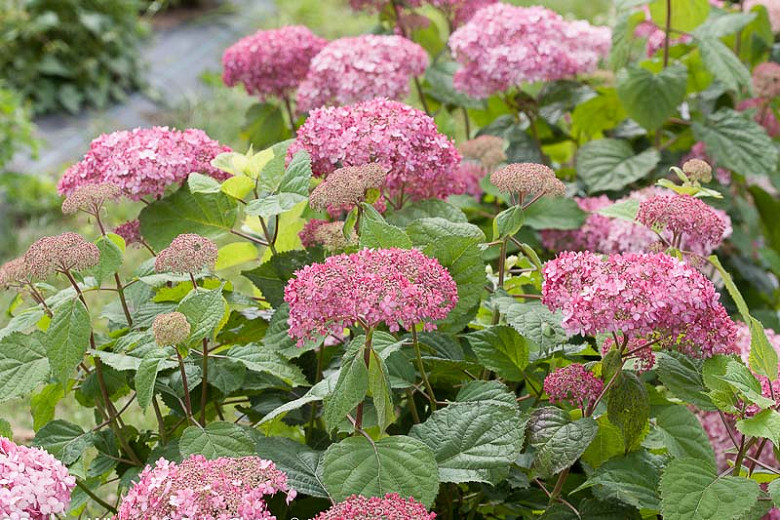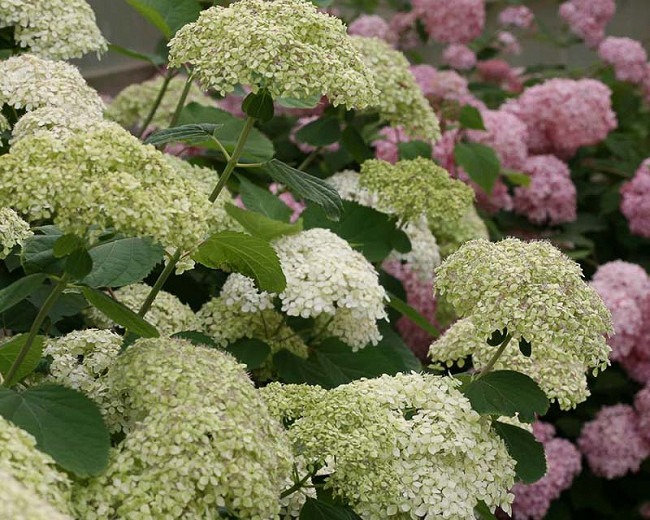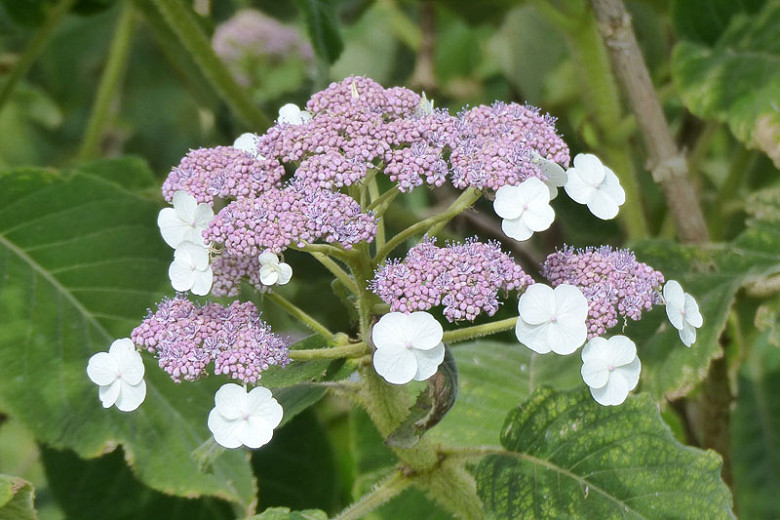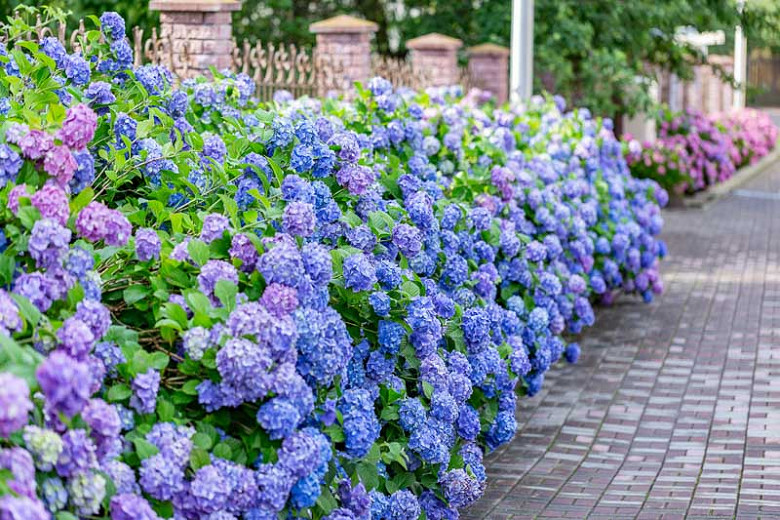Hydrangea arborescens (Smooth Hydrangea)
Hardy and adaptable, Hydrangea arborescens (Smooth Hydrangea) is a small, densely multi-stemmed deciduous shrub with large rounded clusters, up 6 in. across (15 cm), packed with delicate flowers on the ends of its branches. Blooming from early to late summer, the flowers emerge pale green, turn to creamy-white, then eventually fade to tan adding winter interest to the landscape. The luminous blossoms brighten shady areas and bring life to the garden. After the flowers fade, they make excellent dried flowers. The stems are covered with an attractive peeling bark and are clothed with oval, serrated, dark green leaves, 2-6 in. long (5-15 cm). The foliage turns yellow in the fall. Native to woodlands in the eastern United States, Hydrangea arborescens is well suited for massing or as an accent specimen in the garden.
- Vigorous, this deciduous shrub typically grows 3-5 feet tall and wide (90-150 cm). Smooth Hydrangea suckers freely, creeping over large areas
- Smooth hydrangea can be grown in full sun or dappled shade (the hotter the climate, the more shade is needed) in average, medium, well-drained soils. Full sun is tolerated if constant moisture is provided.
- Perfect for the shrub or mixed border, wonderful planted as a flowering hedge, excellent backdrop for your favorite perennials.
- Keep an eye out for bud blight, bacterial wilt, leaf spots, mold, rust, powdery mildew, aphids, mites, scale and nematodes.
- Since Smooth Hydrangea blooms on new wood, pruning has to happen late winter or early spring to encourage vigorous growth. The harder you prune (even to the ground), the larger the flowerheads will be.
- Propagate by seed or cuttings. Softwood cuttings, which should be taken early, root extremely easily.
- Can cause mild stomach upset if ingested and contact with foliage may aggravate skin allergies.
- Toxic to dogs, toxic to cats, toxic to horses.
- Native to the eastern United States.
Requirements
| Hardiness | 3 – 8 |
|---|---|
| Heat Zones | 1 – 9 |
| Climate Zones | 1, 1A, 1B, 2, 2A, 2B, 3, 3A, 3B, 4, 5, 6, 7, 8, 9, 10, 11, 12, 13, 14, 15, 16, 17, 18, 19, 20, 21, A3 |
| Plant Type | Shrubs |
| Plant Family | Hydrangea |
| Exposure | Full Sun, Partial Sun |
| Season of Interest | Summer (Early,Mid,Late)Fall |
| Height | 3' – 5' (90cm – 150cm) |
| Spread | 3' – 5' (90cm – 150cm) |
| Spacing | 60″ (150cm) |
| Water Needs | Average |
| Maintenance | Low |
| Soil Type | Clay, Loam, Sand |
| Soil pH | Acid, Neutral |
| Soil Drainage | Moist but Well-Drained, Well-Drained |
| Characteristics | Dried Arrangements, Cut Flowers, Showy |
| Native Plants | United States, Midwest, Illinois, Indiana, Kansas, Missouri, Ohio, Northeast, Connecticut, Delaware, Massachusetts, Maryland, New Jersey, New York, Pennsylvania, Southeast, Alabama, Arkansas, Florida, Georgia, Kentucky, Louisiana, Mississippi, North Carolina, South Carolina, Tennessee, Virginia, West Virginia, Southwest, Oklahoma |
| Tolerance | Clay Soil, Rabbit, Dry Soil, Rocky Soil, Wet Soil |
| Attracts | Butterflies |
| Garden Uses | Beds and Borders, Hedges and Screens, Patio and Containers |
| Garden Styles | City and Courtyard, Informal and Cottage, Traditional Garden |
